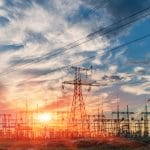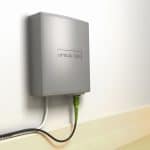
Fiber Optics Can Help Detect Deep-Sea Earthquakes
Detecting Earthquakes With Deep-Sea Fiber Optics
Earthquakes are destructive forces that can devastate an entire region in a few minutes. When they trigger tsunamis, the devastation can be much worse. In 2011, an earthquake produced a tsunami that knocked out three nuclear reactors in Japan and killed over 20,000 people in east Asia. Seismologists have worked hard to develop a system that can quickly detect earthquakes and provide instant warnings for the nearby population. Caltech seismologists and Google Optics experts are working on a revolutionary project that uses deep-sea fiber optic cables to detect earthquakes. Although the system is still being tested, its results are promising, and hopefully, coastal residents will not be caught off-guard by tsunamis in the future.
Utilizing the Underwater Global Network
In the 1980s, governments and telecommunication experts collaborated on a massive project for laying deep-sea fiber optic cables. Each cable spanned thousands of kilometers across the ocean, and the project successfully created the global network the world depends on for communication.
In the past, scientists tried using fiber optic cables for earthquake detection that weren’t part of the existing infrastructure. Setting up new fiber optics in the ocean at multiple sites is expensive and requires advanced scientific equipment to monitor each site. However, the Caltech project uses the existing active cables and does not require additional infrastructure spending.
Monitoring Light Polarization
The deep-sea cables are composed of several glass fibers bundled together that transfer laser pulses of data at incredible speeds across the oceans. Operators monitor the fibers’ polarization to ensure the optimal amount of data is moving through the cables.
Polarized light only travels in one direction, and by modifying the electric field’s path, several signals can be sent simultaneously in one fiber. The light sends the data signals at rates over 124,000 miles per second. When the signal ends its journey at the receiving end, the operator checks the data stream to verify the signal’s stability. Fiber optics used on land are often disturbed by lightning strikes, extreme temperatures or natural disasters that change the polarization.
In the ocean, the colder temperatures help stabilize the polarization. However, if an earthquake or fierce storm occurs, the polarized light changes considerably. Since the polarized light is checked every twenty seconds, the new system can provide an almost instant warning to the population. Current earthquake monitors are based on land and take several minutes to warn residents.
Testing the Detection Process
Researchers from Caltech and Google chose the Curie Cable to conduct their seismology tests. The Curie Cable is stretched over 10,000 kilometers from Los Angeles, California to Valparaiso, Chile. In the nine months they tested the cable, 20 earthquakes were detected. The largest earthquake, which measured a magnitude of 7.7, was detected off the coast of Jamaica in January 2020. Tsunamis were not detected during the tests, but scientists have reported changes in polarization from heavy wave activity, and they’re confident they will soon be able to detect tsunamis.
In the North Sea, Caltech tested their system on a wind farm cable that stretched from the ocean to the shore. The several thousand sensors used on the test would have cost several million dollars to install if the team had to start from scratch by installing new cables. The sensors detected an earthquake near Fiji with a magnitude of 8.2.
The promising results from the Curie Cable and North Sea tests indicate that the fiber optic system has the potential to improve earthquake detection devices considerably. More tests are needed, and Caltech seismologists stated that tests similar to ones at the Curie Cable could be conducted at any site with deep-sea fiber optic cables. When you need experienced professionals offering fiber optic construction and engineering, you can trust V1 Fiber.





No Comments
Sorry, the comment form is closed at this time.